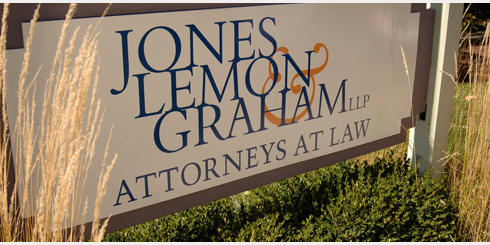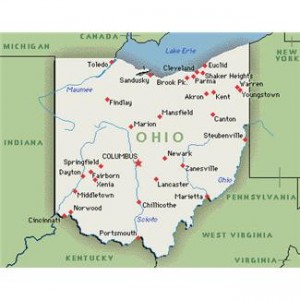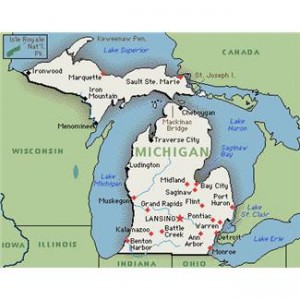by Christopher Graham and Joseph Kelly

The 2008 financial crises continues to generate lawsuits affecting professionals, directors, and officers and their insurers. The Fourth Circuit recently addressed an insurer’s duty to defend and indemnify a real estate closing service sued for conspiring to strip equity from homeowners in foreclosure. See Cornerstone Title & Escrow, Inc. v. Evanston Ins. Co., Case No. 13-1318 (4th Cir. Feb. 19, 2014). The opinion is “unpublished” and thus non-binding in the Fourth Circuit, but parties still may cite it in arguing their positions. For D&O and professional liability insurers and their customers, the analysis of the personal profit exclusion thus potentially has broader application. This court says the exclusion won’t apply where the insured allegedly is liable and makes restitution for co-conspirators’ improper gains, but isn’t alleged to have received gains itself.
The scheme
Remember 2008. Real-estate values collapse. Home equity vanishes. Mortgages exceed collapsing market values. Or equity is substantially diminished. Jobs are lost. Mortgage payments are missed. Foreclosures ramp up.
And schemers scheme.
A foreclosure “consulting” business is born. Consultant joins forces with mortgage broker and real-estate closing service. Consultant’s market? Homeowners facing foreclosure. Its product? Sale-leaseback transactions: we’ll buy your home; you get cash for your home equity; you avoid foreclosure; we’ll lease the home to you; you stay in it; and you re-purchase it later.
And what does consultant get? A consulting fee, it says.
What does consultant really get? The fee. Plus cash homeowner was to get for her home equity. Plus monthly rent much higher than the mortgage payment.
How does consultant get homeowners’ cash for equity? Consultant tells them unspecified closing fees and charges consumed the equity and convinces them to sign over their checks.
How is closing service involved? It supposedly provides closing services for the sale-leaseback, fails to deliver checks to homeowners for their equity, and delivers them instead to consultant.
What else happens? High rent drives homeowners/now-renters from their homes. There’s never a buy-back for homeowners.
The suit
And . . . the Maryland Attorney General in 2008 sues consultant, mortgage broker, closing company and related parties. AG alleges closing service and all other defendants violated Maryland’s Protection of Homeowners in Foreclosure Act and Consumer Protection Act, by scheming to “take title to homeowners’ residences and strip the equity that the homeowners ha[d] built up in their homes.” AG also alleges closing service, by failing to disclose it provided homeowners’ equity checks to consultant, violated the Consumer Protection Act; and, in acting as settlement agent, “participated in and provided substantial assistance to [consultant’s equity-stripping] scheme.” AG identifies 13 transactions and asks for a variety of relief, including restitution.
AG not only seeks to hold closing service responsible for its alleged non-disclosure, but also for co-defendants’ acts. AG alleges the service’s “concerted action [made] the enterprise possible”; so it’s “jointly and severally liable” for each co-defendant’s acts, including failing to provide written agreements; requiring membership fees before providing consulting services; obtaining interests in homes while offering consulting; representing services were to avoid foreclosure; failing to disclose the nature of services, material terms of sale-leaseback agreements, rental agreements, and of any subsequent repurchase; failing to provide statutorily required forms and notices; failing to determine whether homeowners have reasonable ability to make lease payments and repurchase homes; misleading consumers about entitlement to closing proceeds and about placing them in escrow; taking consumers’ settlement checks; and recording deeds and encumbering properties before rescission periods expire.
Closing service denies AG’s allegations.
The policy and coverage litigation
Closing service looks for defense under a “Service and Technical Professional Liability Insurance” policy. Subject to the policy’s terms, Evanston Insurance Company agreed to pay “the amount of Damage and Claims Expenses because of any (a) act, error or omission in Professional Services rendered or (b) Personal Injury committed by [closing service].”
But insurer refuses to defend. It cites exclusions for claims arising out of (a) improper personal gain, (b) dishonesty, (c) conversion, theft, and the like, and (d) the Real Estate Settlement Procedures Act.
Closing service settles with AG by agreeing to pay over $100,000 in restitution. And it sues insurer for breach of a duty to defend and indemnify.
Insurer wins a summary judgment. AG’s claims are excluded as arising out of improper personal gain and conversion, theft, and the like. Dishonesty and RESPA exclusions aren’t addressed.
But the appeals court decides the improper personal gain and conversion exclusions are no grounds for avoiding coverage and returns the case to the district court to consider the dishonesty and RESPA exclusions.
So why the result? The duty to defend is broader than the duty to indemnify. If some claims in AG’s complaint are potentially within coverage, insurer must defend all claims, even if others are excluded. This appeals court reasoned that at least some of AG’s claims were outside the scope of the improper personal gain and conversion exclusions. So the district court was wrong in finding no duty to defend, at least based on the two exclusions it cited. Since its decision on defense was in error, and its decision on indemnity was for the same reasons, its indemnity decision was wrong too.
Personal Profit Exclusion:
How did the improper personal gain exclusion apply? It applied to claims “based upon or arising out of [closing service’s] gaining any profit or advantage to which [closing service] is not legally entitled.”
What was the appeals court explanation for why AG claims were outside its scope? The AG’s “complaint did not allege that any particular ‘profit’ or ‘advantage’ inured to [closing service’s] benefit, as [the improper personal gain] exclusion . . . requires. To the contrary, the complaint alleged that all the relevant benefits and funds went to [consultant and related parties] and, perhaps, [mortgage broker]. It was [consultant and related parties], after all, who “stripped” the equity from homeowners’ homes by contriving false fees and other reasons to obtain the homeowners’ settlement proceeds.”
“There is no allegation that [closing service] should not have collected the settlement proceeds because, as a settlement agent, the company was required to do so. [citation omitted] While the homeowners’ equity and money might be an illegal profit or advantage that went to someone after settlement, those assets went to parties other than ‘the Insured’ under the terms of [its] policy with Evanston.”
The improper personal gain exclusion also “would not apply because the underlying complaint did not allege illegal profiteering by [closing service]. Instead, the complaint alleged illegal conduct that produced incidental gains. Put another way: the Attorney General could have succeeded on its claims against [closing service] without showing that [it] received a single dollar or any other advantage, legal or illegal. In fact, many of the claims for which [closing service] was allegedly jointly and severally liable did not involve money at all, but instead alleged wrongful disclosures and misrepresentations. [citation omitted] The underlying nondisclosure claims, at a minimum, do not ‘arise out of’ the illegal profit or advantage itself, so those allegations of the complaint do not fall within the exclusion.”
“[I]t makes no difference that [closing service] received fees for the settlement services that it provided at closing when the houses were conveyed to [consultant]. The complaint does not allege that [closing service] overcharged or that it failed to provide bona fide settlement services. . . . [Closing service’s] receipt of legally justified funds does not defeat policy coverage. [citation omitted] More importantly, . . . , [AG’s] complaint did not seek damages for the ‘consideration or expenses paid to [closing service] for services or goods.’ [citation omitted] Because [AG’s] claims did not touch upon [closing service’s] settlement fees, those fees could hardly have been a ‘profit’ or ‘advantage’ that spurred the underlying claim.”
It also didn’t matter that AG sought “restitution” from closing service. “[I]n a case that involves ‘concerted action’ . . . the restitution award doesn’t necessarily aim to disgorge benefits from particular defendants. Instead, the award serves to disgorge the benefits going to the scheme as a whole. A conspiring Consumer Protection Act defendant will therefore face potential restitution anytime any of his co-conspirators enjoyed some benefit. [citation omitted] A defendant who enjoyed no personal gain could still be ordered to pay restitution if he were part of a broader concerted action that produced benefits to a fellow co-defendant.”
In deciding this point, the court relied on J.P. Morgan Secs. Inc. v. Vigilant Ins. Co., 992 N.E.2d 1076, 1082-83 (N.Y. 2013). That court found the exclusion inapplicable where the insured’s disgorgement payment “did not actually represent the disgorgement of [insured’s] own profits,'” but instead “‘represented the improper profits acquired by third-part[ies].'”
Conversion Exclusion:
How did the conversion exclusion apply? It applied to claims “based upon or arising out of the actual or alleged theft, conversion, misappropriation, disappearance, or any actual or alleged insufficiency in the amount of, any escrow funds, monies, monetary proceeds, or any other assets, securities, negotiable instruments, irrespective of which individual, party, or entity actually or allegedly committed or caused in whole or part the [excluded act].”
What was the appeals court explanation for why AG’s claims were outside its scope? Well:
In Maryland, the payee of a check (here, the homeowner) must receive the check before he or she can bring a conversion action based on a misuse or improper delivery of it. [citation omitted] Where the payee has not received the check, the payee retains a cause of action against the drawer (in this case, [closing service]) for the liability reflected in the check, but, at least at that point in time, cannot bring a conversion action. [citation omitted] In this case, [closing service] allegedly misdirected the settlement checks before they ever reached the hands of the homeowners. Thus, the necessary element of delivery for a Maryland conversion action to the payee was absent at the time of the allegedly wrongful transfer by [closing service].
What else did the appeals court say about the exclusion? The AG’s complaint included “other allegations” outside of its scope so insurer would have a duty to defend even if closing service’s alleged misdirection of homeowner checks qualified as a claim “based upon or arising out of . . . conversion . . . .”
Tag: Maryland, professional liability, improper personal gain, personal profit exclusion, conversion exclusion, duty to defend








![MH900189590[1]](http://www.joneslemongraham.com/blog/wp-content/uploads/2014/02/MH9001895901-300x300.jpg)

